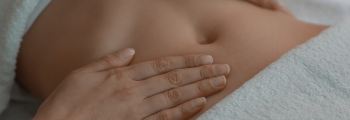This article is intended to explain the benefits and effects of light therapy, how you can use it and whether you should expect certain risks. We would also like to give you an indication of how often you can use light therapy. To do this, we will briefly explain the principles of how it works and have selected a few interesting studies that show how near infrared light (NIR) can benefit your body and your health. First of all: the list of benefits is long!
Light, color spectrum and effect
If you protect yourself from the sun in summer, use sun cream or don't spend long periods of time in the blazing sun, you already know that light also harbors dangers. The ultraviolet (UV) light contained in sunlight, for example, rapidly ages the skin and therefore many cells of your body's largest organ.
On the opposite side of the color spectrum you can find the 'near infrared'. In contrast to harmful UV light, this has proven to be protective against ageing in animal studies. The near infrared comprises the wavelengths from 780 to 3000nm and is located in the non-visible range of the color spectrum.
In another article, we have already talked about the effect of light on sleep . There, we talked about the visible part of light and realized for the first time that light has a major influence on our everyday lives. We also learned when it is better to avoid light, especially the blue part of the spectrum, and how you can benefit from light in the morning.

The Photon Panel L from German supplier Photon Pro is the perfect addition to your longevity routine.
NIR at the cellular level
So what are the benefits of near infrared (NIR)? An improvement of the circadian rhythm, reduced oxidative stress (fewer free radicals) and a positive effect on the neuronal networks (connections in the brain) could be demonstrated. In addition NIR reduces inflammation and associated pain or edema (fluid accumulation in the tissue). Furthermore, the therapeutic application improves the healing of wounds or other injuries such as broken bones or torn ligaments and has therefore been of great importance in physiotherapy for some time.
These diverse effects of NIR are attributed to the enzyme cytochrome c oxidase which is an important component of the mitochondrial respiratory chain . The mitochondria are probably known to you from your school days as the cell's power plant - this analogy hits the nail on the head, because the mitochondria are used to produce energy. The mitochondria are involved in many metabolic processes and so is cytochrome c oxidase. Its stimulation can accelerate a number of processes. Furthermore, studies have shown increased ATP (adenosine triphosphate) levels and increased citrate synthase. ATP serves as the cells' main energy store. Citrate synthase plays a crucial role in the citrate cycle, which is also important for energy production in our body.
You may be interested in
Example studies: what are the benefits of NIR?
As early as 1903, the Nobel Prize in Physiology and Medicine was awarded to Niels Ryberg Finsen who demonstrated the stimulating effect of light on tissue. He was mainly concerned with the antibacterial effect of concentrated light.
One study examined competitive athletes who were treated with NIR. This showed a significant improvement in the athletes' performance. Various laboratory tests were carried out to explain the improvement: oxygen uptake from the blood and the time to exhaustion were significantly increased in a running test.
Did you know?
The American millionaire and longevity enthusiast Bryan Johnson also uses NIR several times a week. But that's not all. His project Blueprint is designed to stop him ageing as much as possible and, in the best case scenario, even turn back his biological age . To do this, Bryan Johnson takes more than 100 different food supplements every day, practices a strict fasting and sports program and has even had his younger son's blood transfused. But this is not even the craziest method the American has tried to live forever.
How often should you use NIR?
One session is sufficient for a local effect. This is the case, for example, if you want to take advantage of improved wound healing. However, if you want to benefit from light therapy in general, you should use a lamp every day or at least five times a week. Simply put: the more often you use the light application, the better the effect and your benefits will be to a certain extent. So use it consistently and not just sporadically. One application can be scheduled to take around 10 minutes.
Can too much light therapy do harm?
Studies have not shown any abnormalities in this regard. We can therefore speak of safe applications. Nevertheless, the benefit for you is not correspondingly higher with very frequent use. This is also referred to as the "ceiling effect".
For further and specific information, you can contact the manufacturers of various lamps, of course there are differences in the models.



































































